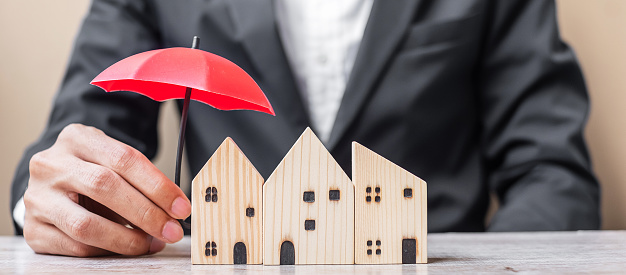Homeowners insurance is an essential type of insurance coverage for those who own a home. It offers financial protection for your home, personal property, and liability. Standard homeowners insurance policies typically cover a wide range of risks, including damage caused by natural disasters, theft, fire, and other perils. However, it’s important to understand that not all risks are covered by a standard policy, and you may need to purchase additional coverage to fully protect yourself.
Dwelling coverage
Dwelling coverage is the main component of a standard homeowners insurance policy. It provides protection for your home and its structural components, such as walls, roof, and foundation. This coverage helps to pay for repairs or rebuilding costs if your home is damaged or destroyed by a covered peril. It’s important to note that dwelling coverage is based on the replacement cost of your home, not its market value. This means that you’ll receive the amount of money it would cost to rebuild your home if it were destroyed, regardless of the current market value.
Personal property coverage
Personal property coverage is another important component of standard homeowners insurance. It provides protection for your personal belongings, such as furniture, clothing, electronics, and jewelry. This coverage typically helps to pay for repairs or replacements if your personal property is damaged, stolen, or destroyed by a covered peril. It’s important to understand that personal property coverage is typically limited to a percentage of your dwelling coverage limit. For example, if you have $200,000 of dwelling coverage, you may have up to $100,000 of personal property coverage.
Liability coverage
Liability coverage is also a crucial component of standard homeowners insurance. It provides protection if you’re found to be responsible for causing injury to someone else or damaging their property. This coverage helps to pay for legal fees, medical expenses, and other damages if you’re sued. Liability coverage typically starts at $100,000, but it’s important to understand that this amount may not be enough to fully protect you. You may need to purchase additional liability coverage if you have substantial assets or high income.
Loss of use coverage
Loss of use coverage is another component of standard homeowners insurance. It provides financial assistance if you’re forced to temporarily relocate due to a covered peril. This coverage helps to pay for expenses such as hotel bills, dining expenses, and storage fees if your home is uninhabitable due to damage caused by a covered peril. Loss of use coverage is typically limited to 20% to 30% of your dwelling coverage limit.
Exclusions and limitations
It’s important to understand that standard homeowners insurance policies have exclusions and limitations. For example, flood damage is typically not covered by a standard policy. This means that you’ll need to purchase separate flood insurance if you live in a flood-prone area. Earthquake damage is also typically excluded from standard homeowners insurance. Other common exclusions include damage caused by mold, pests, and wear and tear. It’s important to carefully review your policy to understand what is and isn’t covered, and to purchase additional coverage if necessary.
Conclusion
Standard homeowners insurance provides financial protection for your home, personal property, and liability. Understanding the different types of coverage offered by a standard policy is crucial in making sure you have the right amount of protection for your needs. However, it’s important to remember that standard policies have limitations and exclusions, and you may need to purchase additional coverage to fully protect yourself. If you have questions about your homeowners insurance, it’s best to speak with an insurance agent who can help you understand your coverage and options.


